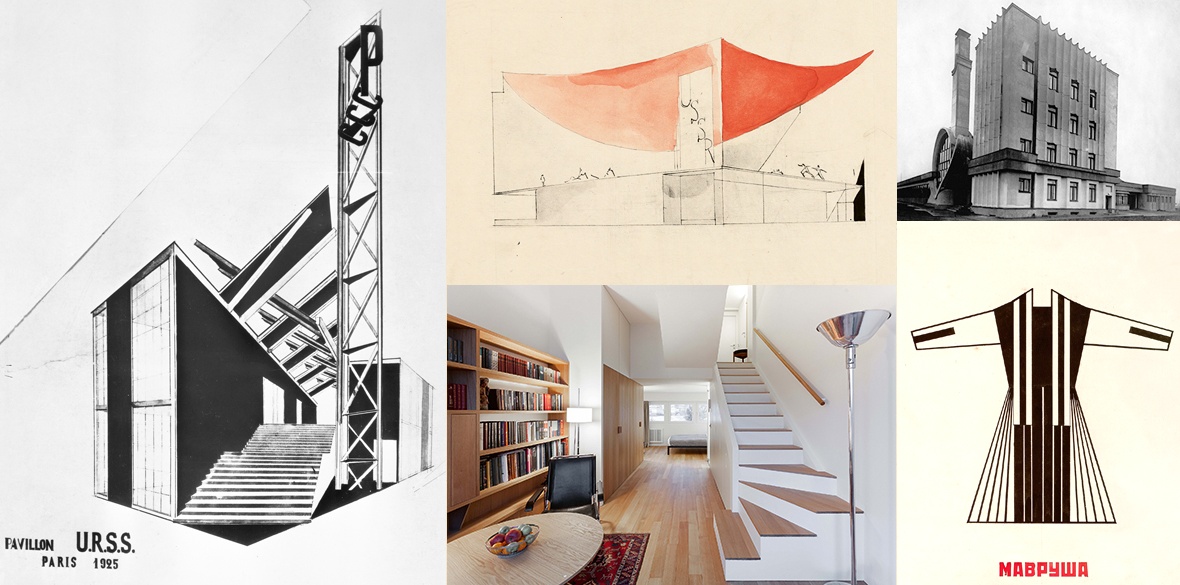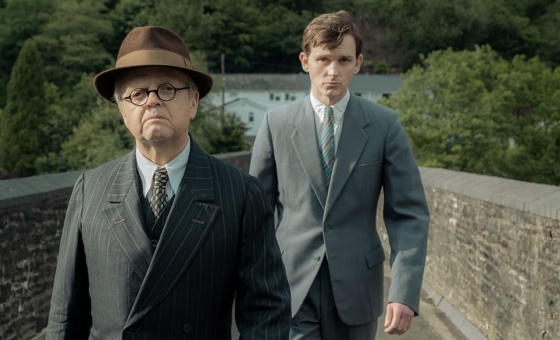This is the last article you can read this month
You can read 5 more article this month
You can read 5 more articles this month
Sorry your limit is up for this month
Please help support the Morning Star by subscribing here
Soviet Design from Constructivism to Modernism 1920-1980
by Kristina Krasnyanskaya and Alexander Semenov
Scheidegger & Spiess £43.85
“...THE Russians have introduced a new energy and new artistic possibilities... pointing the direction they must follow to reach their ideal, the new human ideal: a constructive way of life. They are the children of the future.”
Lajos Kassak, 1922
IN THE 1920s, the world looked to the young Soviet Union as a byword for new approaches—not only in politics and social organisation, but also in various areas of artistic creativity, including art and design.
Radical creative figures in the rest of the world had been electrified by the Russian Revolution of October 1917 and were eager to learn about the innovative experiments that were being conducted by their colleagues in the young workers’ state.
Western artists and architects looked to those painters, sculptors, architects and designers who are associated with what we now call the heroic Russian avant-garde: figures like Vladimir Tatlin, Kazimir Malevich, El Lissitzky, Konstantin Melnikov and others who were committed to using their skills to build a new socialist world of freedom and equality.
The first opportunity for the West to see what had been achieved by these artists was the Erste Russische Kunstausstellung [First Russian Art Exhibition], which opened in Berlin in October 1922. Not surprisingly, the show drew enormous crowds.
Reviewers were particularly struck by Malevich’s Suprematist paintings, consisting of simple geometric forms in pure colours floating on white grounds, and were equally stunned by the completely non-objective counter-reliefs of Tatlin and his colleagues, constructed from banal, everyday materials.
Some commentators even grasped the social and utilitarian implications of these works, which seemed to be exploring the fundamental building blocks of form, of materials, of space.
The most inventive works in the exhibition encouraged German painters and sculptors to relinquish Expressionism and pursue more geometric approaches to art. Similarly, exposure to the most avant-garde Soviet art might also have prompted teachers at the Bauhaus to abandon the school’s craft orientation and adopt a more technological and industrial ethos.
That exhibition included some items of decorative art and some information about the new art schools, including the VKhUTEMAS (Higher Artistic and Technical Workshops), which had been set up by official decree on December 18 1920 as “a specialised educational institution for advanced artistic and technical training, created to prepare highly qualified master artists for industry as well as instructors and directors of professional and technical education.”
Like the Bauhaus, the school was an important centre for radical innovation in artistic education during the 1920s, developing a new methodology and revolutionising the way in which artists and designers were trained.
In 1923, El Lissitzky’s Proun Room provided an example of how the new geometric language of Suprematism might be applied to articulating a three-dimensional space. Using asymmetrical and dynamic compositions of geometric components, he explored the creative possibilities of the new style to orchestrate viewers’ sensations, actions and experiences rather than to produce a fully functional everyday environment.
Yet it was precisely this application of art to the more practical tasks of constructing the new Soviet society that was revealed a few years later in the Soviet display at the Exposition des arts decoratifs et industriels modernes [Exhibition of modern decorative and industrial arts], held in Paris in 1925.
Konstantin Melnikov’s Soviet Pavilion and Alexander Rodchenko’s Workers’ Club generated a great deal of discussion, were admired and awarded prizes. Both structures expressed the essence of revolutionary socialism. Both used unadorned, simple geometric forms and an economic type of skeletal construction. And both were explicitly ideological.
The hammer and sickle proudly surmounted the criss-cross structure over the staircase of Melnikov’s building, while Rodchenko presented Lenin’s name in the same modular system that he had used in designing the furniture for the Workers’ Club.
A simplified version of Tatlin’s Model for a Monument to the Third International was on display in the main section, along with a vast array of artefacts, including Suprematist-designed porcelain, all of which provided “a contrast to the luxury and wealth of other countries.”
While responses were not always positive, the new approaches to design were evident to all and evoked the appreciation of many.
The Soviet Union continued to create a sensation at the world fairs, promoting an image of modernity and progress. In Paris in 1937, at the Exposition internationale des arts et techniques dans la vie moderne [International Exhibition of Arts and Techniques in Modern Life], the extensive fenestration and the rhythm and repetition of the rectangular forms on the sides of the Soviet Pavilion conceived by Boris Iofan complemented the more historicist elements of the design, creating a sensation of dynamism that was emphasised by Vera Mukhina’s sculpture of the Male Worker and Female Collective Farmer, striding towards the future, heads held high and holding aloft the hammer and sickle.
Inside, the continuities with modernism were equally evident, especially in Nikolai Suetin’s slender columns on the staircase, which recalled Malevich’s own experiments with architectural Suprematism.
The whole presented a vivid, striking contrast to Albert Speer’s neo-classical building celebrating the Third Reich. Two years later, in 1939, at the New York World’s Fair, the modernist qualities of Iofan’s design were less evident, but still not entirely absent.
Throughout the 1920s and for some of the 1930s, Soviet architecture and design, committed to socialism, modernism and technology, stood in juxtaposition to the more conservative and traditional approaches embraced by many European countries, as well as to those of the industrially advanced, but socially unjust United States of America.
In 1927, the Exhibition of Contemporary Architecture in Moscow attracted enormous attention from foreign designers. Articles about Soviet art and architecture appeared frequently in the Western press and books such as El Lissitzky’s 1930 Russland. Die Rekon- struktion der Architektur in der Sowjetunion [The reconstruction of architecture in the Soviet Union] were popular among the creative intelligentsia.
During the Stalinist era and particularly in the years just before and just after the second world war, Soviet architects and designers tended to turn their backs on avant-garde approaches and produce furniture and buildings that sought to evoke an immutable classical elegance and a timeless quality in the solidity of their materials, their historical allusions and their ornate forms.
The gradual rediscovery of and re-engagement with the more modernist achievements of the 1920s started under Nikita Khrushchev and was stimulated in part by increased contact with the West. In the summer of 1959, Muscovites flooded to the American National Exhibition in Sokolniki Park.
Opened by Richard Nixon, the show was pure propaganda and contained an enormous range of items, selected to present a positive image of everyday life in the United States. Various works of American art, including the figurative paintings of Andrew Wyeth and the abstract works of Jackson Pollock, were shown alongside the latest fashions and mundane domestic items like washing machines.
Although Soviet officials argued that not everyone in the US enjoyed the facilities of the model kitchen on display, this did not prevent Soviet citizens from admiring America’s slickly designed, mass-produced consumer durables.
The experience encouraged Soviet artists and designers to move away from the creative precepts promoted under Stalin and actively pursue more contemporary styles.
Subsequently, the Higher Scientific and Research Institute of Technical Aesthetics and journals like Technical Aesthetics and Decorative Art began to explore once again the problems and issues first raised in the 1920s and the approaches to industrial and building design that had been developed then.
Today, the Soviet Union has vanished into history, but the architecture and designs that were produced during the 80-odd years of its existence remain — sometimes as concrete items, but often only as paper documents or photographs.
Nevertheless, these designs, the wealth of innovative ideas they embody, the ideals that inspired them, and the dream of creating a new world continue to attract, stimulate and encourage architects and designers everywhere.









